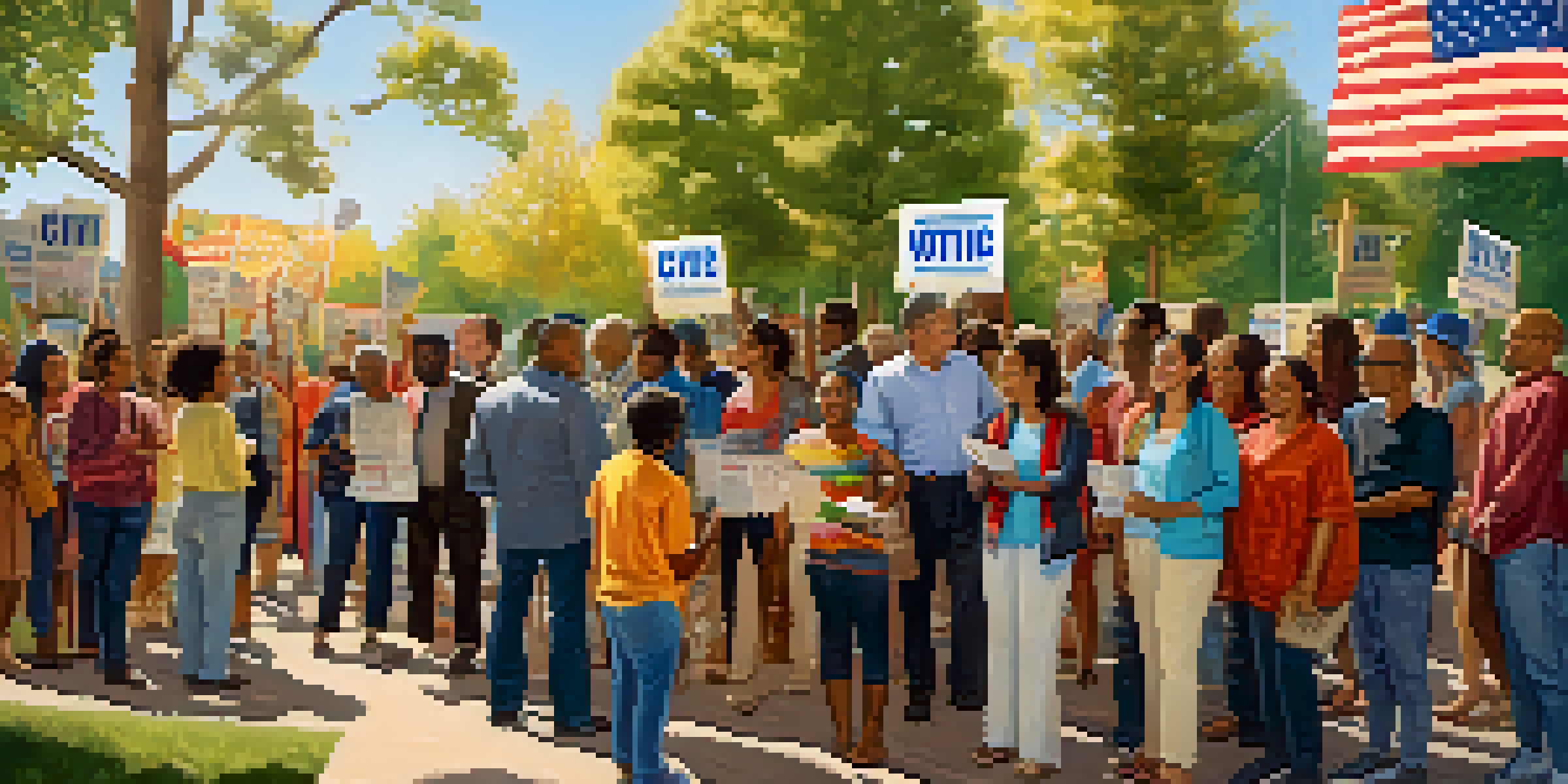The Role of Voter Turnout in Georgia's Political Landscape

Understanding Voter Turnout: A Key Indicator
Voter turnout is often seen as a crucial barometer of a democracy's health. In Georgia, this metric reflects not just civic engagement but also the political climate. Higher turnout rates usually indicate a more involved electorate, which can lead to significant electoral outcomes.
The future depends on what you do today.
For example, in the 2020 presidential election, Georgia experienced a historic surge in voter participation. This increase highlighted the importance of mobilization efforts and reflected the state's pivotal role in national politics. Understanding the reasons behind these spikes can provide insights into voter behavior and preferences.
Moreover, analyzing turnout trends allows political analysts to assess which demographics are engaging more or less in the electoral process. This data is invaluable for candidates and parties aiming to tailor their messages and outreach efforts for future elections.
Historical Context: Georgia's Voter Turnout Trends
Georgia's history with voter turnout has been a rollercoaster ride, influenced by various political and social factors. In the past, systemic barriers such as voter suppression tactics significantly lowered participation rates, particularly among minority groups. Understanding this history is crucial to grasping the current landscape.

In recent elections, however, there's been a notable shift. Initiatives aimed at increasing voter accessibility, such as same-day registration and early voting, have contributed to higher turnout rates. These changes reflect a broader commitment to ensuring that all voices are heard in the democratic process.
Voter Turnout Reflects Democracy's Health
Higher voter turnout rates indicate increased civic engagement and can significantly influence electoral outcomes.
Looking back, the evolution of voter turnout in Georgia provides vital lessons for today's political players. Recognizing the challenges faced by different communities helps frame ongoing discussions about equity and representation in voting.
The Role of Demographics in Voter Turnout
Demographics play a significant role in shaping voter turnout in Georgia. Factors such as age, race, and education level can influence whether individuals participate in elections. For instance, younger voters and people of color have increasingly become pivotal in recent elections, often swaying outcomes.
Voting is not only our right; it is our power.
In the 2020 election, diverse coalitions emerged, highlighting the power of these demographic groups. Their mobilization not only impacted the presidential race but also local and state contests. This shift marks a critical transformation in Georgia's political landscape, indicating that every vote truly counts.
Understanding these demographic trends allows political campaigns to strategize effectively. By identifying which groups are less likely to vote, campaigns can focus their outreach efforts, ensuring that their messages resonate with a broader audience.
Mobilization Efforts: Strategies to Increase Turnout
Mobilization strategies are essential for enhancing voter turnout, especially in a diverse state like Georgia. Grassroots organizations, social media campaigns, and community events have proven effective in encouraging people to vote. These efforts focus on educating voters about the importance of their participation.
For example, organizations like Fair Fight have played a crucial role in advocating for voter rights and increasing awareness of electoral processes. By providing resources and support, they empower individuals to make informed decisions at the polls. Such initiatives can lead to substantial increases in turnout, particularly among historically underrepresented groups.
Demographics Shape Voting Behavior
Factors such as age, race, and education level greatly impact voter participation, highlighting the importance of targeting outreach efforts.
Moreover, collaboration between various community stakeholders can amplify these mobilization efforts. When local leaders, schools, and organizations unite to promote voting, the impact can be transformative, fostering a culture of civic engagement.
The Influence of Political Climate on Turnout
Georgia's political climate has a direct impact on voter turnout, with elections often reflecting broader national trends. When issues such as healthcare, education, or civil rights take center stage, voters are more likely to engage in the electoral process. This connection illustrates how local concerns can drive turnout.
In recent elections, heated races and contentious ballot measures have mobilized voters from all sides of the political spectrum. The stakes felt high, prompting many to make their voices heard. This phenomenon underscores how a charged political atmosphere can lead to increased participation.
Furthermore, the presence of competitive races can energize the electorate. When voters feel that their choices matter, they are more inclined to head to the polls, making turnout a critical factor in determining election outcomes.
Challenges to Voter Turnout in Georgia
Despite recent improvements, challenges to voter turnout persist in Georgia. Issues such as voter ID laws and limited access to polling places can deter individuals from casting their ballots. These barriers disproportionately affect marginalized communities, raising concerns about equitable access to the democratic process.
Additionally, misinformation and confusion surrounding voting procedures can create obstacles. Voters may feel overwhelmed by conflicting information, leading to apathy or disengagement. Addressing these challenges requires concerted efforts from both governmental and non-governmental entities.
Mobilization Efforts Boost Participation
Grassroots campaigns and community initiatives are essential in encouraging voter turnout, particularly among historically underrepresented groups.
To combat these issues, education and advocacy are crucial. Ensuring that voters understand their rights and the voting process can help mitigate these challenges, fostering a more inclusive political environment.
The Future of Voter Turnout in Georgia
Looking ahead, the future of voter turnout in Georgia remains dynamic and promising. As the state continues to embrace initiatives aimed at increasing participation, there is potential for sustained engagement among diverse populations. The momentum gained in recent elections could set the stage for future electoral success.
Moreover, technological advancements can play a role in facilitating voter participation. From online registration to mobile voting options, these innovations can simplify the voting process and make it more accessible. Keeping pace with such trends will be essential for encouraging turnout.

Ultimately, the ongoing commitment to fostering an inclusive electoral environment will shape the future of voter turnout in Georgia. By prioritizing accessibility and education, the state can cultivate a politically active and engaged citizenry.